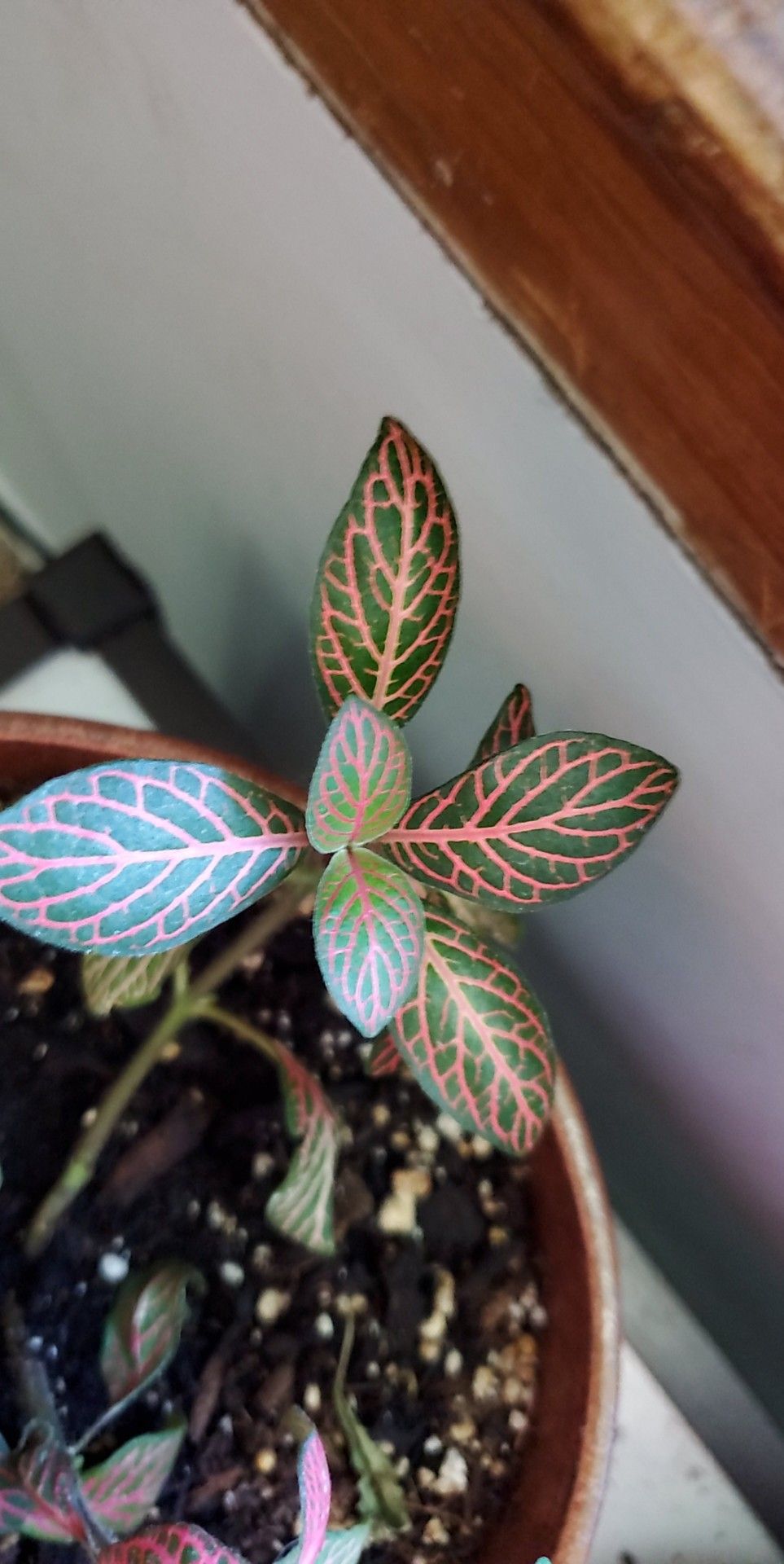Caucasus Nerve Plant

Caucasus nerve plant
No, the nerve plant is not toxic to humans.
How do you take care of a nerve plant?
7 Nerve Plant Care Tips
- Cultivate a humid environment. Nerve plants require high humidity to thrive.
- Exterminate pests. ...
- Feed the plants. ...
- Give them the right light. ...
- Keep your potting soil moist. ...
- Repot when necessary. ...
- Water regularly.
Where should a nerve plant be placed?
Nerve plants can survive in low light conditions, but they do best when grown in a spot that receives bright, indirect light. Place this species in a north- or east-facing window, or opt for a south-facing window with a sheer curtain to filter harsh rays from the sun and prevent sunburn.
How do you take care of a Fittonia nerve plant?
Water do not forget to water this plant under watering is a crime with this. One. Do not keep the
Do nerve plants clean the air?
Also known as the nerve plant, this is a tropical plant native to South America. It is a popular houseplant due to its striking patterned foliage – and in testing, it was shown to be effective at removing benzene, toluene, and TCE from the air.
Is nerve plant air purifying?
Otherwise known as the nerve plant or mosaic plant, Fittonia is a popular air-purifying houseplant due to its lush, patterned leaves. Not only is it a beautiful plant, but it also has some amazing air-purifying benefits. It is effective at removing benzene, toluene, and trichloroethylene from the air.
Do nerve plants like big pots?
Nerve plants are evergreen perennials, so they keep that striking foliage all year long. Fittonia species are compact plantings. They'll grow to about four inches tall, so they're great for small pots and can be placed on tabletops, bookshelves, and desks in homes or offices.
Should I mist my nerve plant?
Nerve plant thrives at temperatures around 70 F but will tolerate a range from the low 60s F to low 80s F. These plants prefer humid conditions similar to those found in rainforests. Regular misting will keep the plants from drying out.
Do nerve plants like direct sunlight?
Nerve plant grows best in low to medium light, though it also thrives in a sunny window if the light is filtered with a sheer curtain. If it gets too much hot sun, even indoors, the leaves may burn, turning brown and crispy.
How often do you water nerve plants?
In the growing season you should water your Fittonia every 3-4 days, but let the soil dry out between each watering. In the Winter, once a fortnight should be enough. Nerve Plants don't like having wet feet so avoid letting them sit in water for prolonged periods of time.
Are nerve plants hard to care for?
It especially thrives in bright, indirect light, where it matures at 3 to 6 inches high. Even though it has tropical “roots,” nerve plant is easier to care for than some houseplants. The light- to medium-green leaves display vivid venation in shades of either white, pink, or red.
How often should I mist nerve plant?
If you don't keep your Fittonia in a terrarium, just make sure to mist it every day, just to keep the humidity high enough. Luckily the plant will let you know when it's not getting enough water.
How do I keep my Fittonia happy?
Your Fittonia will thrive in average room temperatures between 65-80 degrees. Avoid cold drafts and direct airflow from heaters in the winter months. Your Fittonia will appreciate higher humidity levels. You can boost the humidity with frequent misting, placing a humidifier nearby, or using a pebble tray.
Is Fittonia good indoors?
Fittonia does extremely well indoors in bright indirect light.
Does Fittonia need sunlight?
Light. Fittonia prefers bright, indirect light—think north- or east-facing windows—or light through a filtered curtain (perhaps a few feet away from a sunny window). Never place this plant in direct sun.
What plant removes the most toxins?
Spider Plant NASA's study found that spider plants were able to remove 95% of chemicals from the air in 24 hours. Spider plants filter toxins including: carbon monoxide.
Do nerve plants attract bugs?
#7 – Aphids: As with most houseplants, aphids (and mealybugs) can be a problem for nerve plant Fittonia. Avoid introducing aphids to your houseplant collection by carefully examining every new plant you bring in. Look for the insects, themselves, and for the sooty mold and honeydew that accompany them.
Which plant purifies the air the most?
Chrysanthemums (Chrysanthemum morifolium) Florist's chrysanthemums or “mums” are ranked the highest for air purification. They're shown to eliminate common toxins as well as ammonia. Treat yourself to a fresh pot, as this flower only blooms for about six weeks.
Can you put nerve plant in bathroom?
Nerve plant (Fittonia) is colorful and doesn't need bright light to thrive. It doesn't even need natural light from the sun; the glow of a light bulb all day long will keep it going. Nerve plants offer colorful foliage and are great décor if you want a splash of living texture in your bathroom.
What is the best indoor plants for oxygen?
Here are the top 9 Plants Indoor Plants for Oxygen:
- Aloe Vera Plant.
- Pothos Plant. ...
- Spider Plant. ...
- Areca Palm. ...
- Snake Plant. ...
- Tulsi. ...
- Bamboo Plant. ...
- Gerbera Daisy. The colourful flowering plant not only makes the house look beautiful but is an excellent indoor plant for oxygen.












Post a Comment for "Caucasus Nerve Plant "